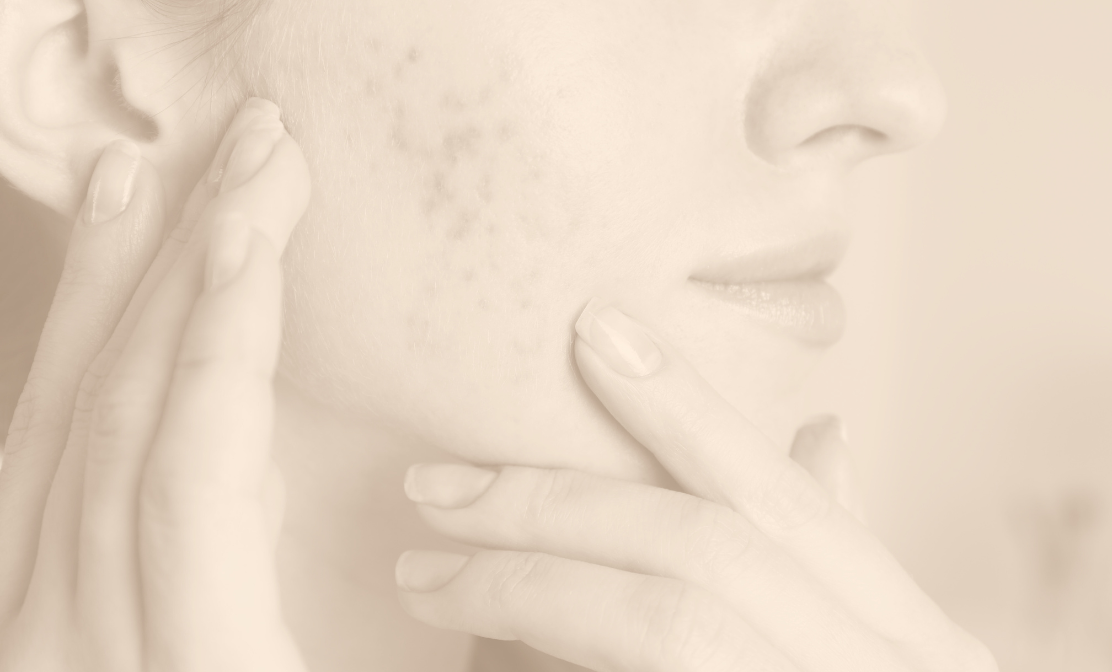Table of Contents
Recovering from a facelift can be both exciting and a little nerve-wracking as you’re eager to see your new look, but you might feel unsure about what to expect along the way. The recovery process usually includes some swelling, bruising, and a bit of tightness as your body heals. Dr. Antimarino and his team will give you specific instructions to help things go smoothly. Getting prepared ahead of time, like arranging some help around the house, taking time to rest, and knowing that healing takes patience, can make a big difference. Most importantly, remember that everyones recovery is different, so try not to compare your progress to anyone else’s.
Understanding Facelift Surgery & Recovery Variables
A facelift isn’t a one-size-fits-all procedure, and understanding the differences between each type can help you make a more confident choice. A mini facelift is the least invasive option, offering a subtle lift to the lower face with a relatively quick 10-14-day recovery, making it ideal for those with early signs of sagging. A traditional full facelift, which includes deeper work on the SMAS layer, provides a more dramatic and longer-lasting rejuvenation of the cheeks, jawline, and upper neck; because it involves repositioning deeper tissues. The recovery is a bit longer, typically 2-3 weeks. Many people also choose to combine their facelift with procedures like a brow lift, eyelid surgery, or fat grafting to achieve a more balanced, comprehensive result. While adding these procedures doesn’t usually extend the total recovery time beyond the typical 2-3 weeks, it can make the healing process feel more intense due to additional swelling or bruising. Overall, choosing the right facelift depends on your individual aging concerns, how much downtime you can manage, and the level of improvement you’re hoping to achieve.
Procedure | What It Fixes | Downtime | Why Should I Choose? |
Mini Facelift | Early sagging, jawline | 10-14 days | Quick recovery, subtle lift |
Full Facelift (SMAS) | Moderate-severe aging, cheeks, jowls, neck | 2-3 weeks | Stronger, longer-lasting results |
Full Facelift + Combined Procedures | Whole-face rejuvenation | ~2-3 weeks (but more swelling) | Most complete improvement, one recovery period |
Factors Affecting Recovery Timeline
Understanding the factors that shape your facelift recovery can help make the process feel more predictable and empowering. Younger patients or those with good skin elasticity often notice faster healing, since their skin bounces back more easily. Your overall health and habits, like avoiding smoking, play a big part too, as smoking can slow down circulation and delay recovery. The extent of your procedure also matters since a full facelift may take longer to heal than a mini one. Everyone’s body has its own natural healing rhythm, so patience is part of the journey. And of course, following your post-op instructions closely is the secret ingredient to getting the best, safest results.
Pre-Surgery Preparation for Optimal Recovery
Preparing for your facelift is just as important as the procedure itself when it comes to ensuring smooth healing and optimal results. In the weeks before surgery, patients are advised to focus on healthy habits like eating well, staying hydrated, and avoiding smoking, all of which help support circulation and a quicker recovery. Dr. Antimarino also recommends pausing certain supplements or medications that may increase your bleeding risk, as well as following any skincare routines designed to strengthen the skin before surgery. It’s also helpful to set up your recovery space in advance with comfortable pillows for elevated sleep, and easy-to-reach items so you can rest without strain. Finally, arranging transportation and support for the first 24-48 hours after surgery ensures you can focus entirely on healing. Thoughtful preparation not only reduces stress on surgery day, but also boosts your chances of achieving the best possible facelift outcome.
Day-by-Day Facelift Recovery: The First Week
Day 1 (Surgery Day)
The day of your facelift procedure is usually a calm, carefully supervised transition from the operating room to home recovery. As you wake from anesthesia, it’s normal to feel groggy or a bit disoriented. A nurse will monitor you in recovery until you’re fully alert. Your face will be wrapped in bandages and a compression garment to help control swelling and support the tissues during these first critical hours. Most patients experience mild to moderate discomfort, but it’s manageable with prescribed pain medication. Since you won’t be able to drive, you’ll need a responsible adult to take you home and stay with you for the first night. Once home, resting with your head elevated is essential to minimize swelling and keep pressure off the healing areas. Feeling tired, foggy, or “out of it” is completely normal on day one, and the goal is simply to rest, stay comfortable, and let your body begin the healing process.
Day 2
At your first follow-up appointment after a facelift, Dr. Antimarino will assess your healing and change your post-operative dressings. During this time, it’s normal for swelling to increase and you may see some bruising start to appear as part of the healing process. Dr. Antimarino or one of our providers will go over proper pain-medication management to keep you comfortable while avoiding overuse. Keeping your head elevated, especially while resting or sleeping, is important as it helps reduce swelling and supports a smoother recovery. You will be able to shower and wash your hair after this visit. Avoid hair dryers or blow dryers as these can cause burns to the healing skin.
Days 3-4 (Peak Discomfort)
Swelling and bruising are usually at their peak by days 3-4, and you may notice tightness, pulling sensations, or areas of temporary numbness as the tissues heal. Pain typically begins to lessen during this period, and many patients can stop prescription pain medications by day 4, switching to over-the-counter options, if needed. Gentle movement, such as short walks, is encouraged to support circulation, but avoid bending, lifting, or anything that increases pressure on the face.
Days 5-6
By days 5-6 after your facelift procedure, many patients notice meaningful improvement as swelling gradually decreases and movement becomes more comfortable. Energy levels often start to rise, making daily activities feel easier, but it’s still important to prioritize rest and avoid any strenuous motions to support proper healing.
Day 7 (End of Week 1)
Day 7 after your facelift often marks a significant recovery milestone, as some stitches may be removed and early signs of healing become more noticeable. Swelling has usually decreased, but is still noticeable, and bruising often starts to fade. You may begin to feel more like yourself physically and emotionally, yet your social appearance may not be where you want it just yet, as residual swelling and discoloration can still be visible.
Week-by-Week Recovery Timeline
Recovery moves forward in stages, and week 2 is often known as the “Transformation Week.” This is when swelling and bruising usually fade significantly, and patients start to look more refreshed and confident in public settings. By weeks 3-4, most visible signs of surgery improve, allowing many people to feel comfortable returning to social activities. During weeks 5-6, you enter the active recovery phase, regaining energy and resuming more regular routines while residual tightness continues to ease. Weeks 7-12 are considered the settling phase, when tissues soften, scars mature, and your face starts to look more natural. Between months 3-6, most patients see their refined results, with contour and definition continuing to perfect. From months 6-12, long-term healing completes as scars fade further and the final, fully settled facelift outcome becomes apparent.
Managing Common Recovery Symptoms
Managing facelift recovery symptoms involves a combination of rest, proper care, and following Dr. Antimarino’s instructions closely. Keeping your head elevated helps reduce swelling during the early days and can ease discomfort and bruising. Taking prescribed or approved over-the-counter pain medications, as directed, helps control soreness as it improves. Gentle movement, staying hydrated, maintaining a healthy diet with increased protein, avoiding smoking and limiting alcohol intake all support overall healing. While avoiding strenuous activity prevents unnecessary strain on the face. Caring for incisions, attending follow-up appointments, and protecting your skin from sun exposure all contribute to a smoother, more comfortable recovery.
Activity Restrictions and Timeline
Social Activities: 2-3 weeks
Swimming: 2-3 weeks
Sun Exposure: Limited for 6 months
Alcohol: Avoid 2 weeks minimum
Smoking: Never. This will seriously impacts healing.
Facelift Incision Care and Scar Management
Caring for your incisions properly helps create the best possible facelift results. Keep the incision areas clean and dry, and follow Dr. Antimarino’s instructions on cleansing and applying product. Avoid picking at scabs or touching the incisions unnecessarily, as this can slow healing or increase the risk of infection. Protect your skin from the sun, as UV exposure can affect their long-term appearance. Please use sunscreen and cover your skin when outdoors. Consistent care combined with healthy lifestyle habits will support a smoother, more refined final outcome.
Warning Signs & When to Call Your Surgeon
While most patients recover smoothly, it’s important to know when something needs medical attention. Contact your surgeon right away if you notice sudden or worsening swelling on any part of your face, signs of infection, severe or persistent pain that doesn’t improve with medication, or any unusual bleeding from the incision sites. When in doubt, always be cautious. Dr. Antimarino and his team are here to guide you and ensure your recovery stays on track.
Frequently Asked Questions About Facelift Recovery
How long does facelift recovery take?
On Day 2, Dr. Antimarino will remove your post-operative dressings so you will be able to shower after that appointment. Swelling and bruising are usually at their peak by days 3-4, and you may notice tightness, pulling sensations, or areas of temporary numbness as the tissues heal. Pain typically begins to lessen during this period, and many patients can stop prescription pain medications by day 4. One week after your facelift marks a significant recovery milestone, as some stitches may be removed and many patients begin to see clearer signs of healing. You may begin to feel more like yourself physically and emotionally, yet your social appearance may not be where you want it just yet, as residual swelling and discoloration can still be visible. Facelift recovery continues to progress in stages, with week 2 often called the “Transformation Week,” when swelling and bruising fade significantly and patients begin looking more refreshed. By weeks 3–4, most visible signs of surgery improve, allowing many people to feel comfortable returning to social activities. During weeks 5–6, you enter the active recovery phase, regaining energy and resuming more regular routines while residual tightness continues to ease. Weeks 7–12 make up the settling phase, when tissues soften, scars mature, and your face starts to look more natural.
What are the worst days after a facelift?
Patients do not typically have a lot of pain immediately after surgery and while pain medication is prescribed, it is not always necessary. Swelling and bruising are usually at their peak by days 3-4, and you may notice tightness, pulling sensations, or areas of temporary numbness as the tissues heal.
When will I look normal enough to go out?
Facelift recovery will progress in stages, with week 2 at the point when swelling and bruising fade significantly and patients begin looking more refreshed. Makeup can be worn to camouflage discolorations at this time, if needed, allowing patients to feel comfortable returning to social activities.
When can I return to work?
Depending on the type of work you do, patients are typically back to work within 2-3 weeks after facelift surgery.
How long does facelift swelling last?
Swelling and bruising can occur after surgery, with mild swelling typically lasting 3-4 weeks.
When do stitches come out?
Stitches are removed by Dr. Antimarino or one of his providers around day 7. You will begin to see clear signs of healing and feel more like yourself both physically and emotionally.
Will I have visible scars?
Depending upon the type of facelift, Dr. Antimarino may place scars around or behind the ear, blending it with the natural contour of the anatomy. The scars may extend partially along the hairline behind the ear as well and follow the natural contour. All patients scar differently, depending upon multiple factors such as genetics, smoking, following post-operative instructions. Dr. Antimarino will discuss ways to minimize scarring, prior to your procedure.
How soon after a facelift can I exercise?
Exercise can be resumed in around 3 weeks. Dr. Antimarino and his team will be closely monitoring your recovery to allow for optimal healing.
Schedule Your Facelift Consultation in Pittsburgh
Facelift recovery is a gradual process that unfolds over weeks, each stage bringing you closer to your refined results. Preparing properly before surgery, following post-operative instructions closely, and maintaining healthy habits all play important roles in achieving a smooth recovery. Most importantly, every patient heals at their own pace, so patience, consistency, and communication with your care team will help you achieve the safest and most noticeable outcome.
If you’re considering a facelift in Pittsburgh, schedule a private consultation with Dr. Jeffrey Antimarino at Bellissimo Plastic Surgery & Medi Spa. We’re here to guide you confidently, from your first consultation through every step of the way.




